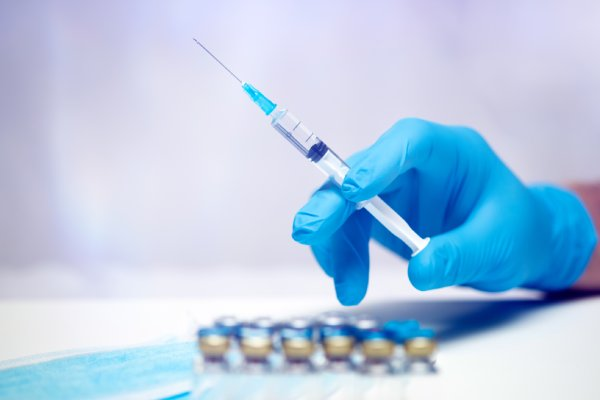In 1796, the trajectory of our relationship with disease changed permanently when Edward Jenner invented the first vaccine. By inoculating a nine-year-old with material extracted from a cowpox sore, Jenner discovered he could help build a person’s immunity against smallpox, a devastating virus that at the time killed three out of every 10 people infected.
Less than 200 years later, on May 8, 1980, the 33rd World Health Assembly declared smallpox had been completely eradicated after worldwide vaccination efforts. “The most dreadful scourge of the human species,” as Jenner termed the disease, had been beaten.
While perhaps the most famous, smallpox is not the only disease tackled by vaccines. Polio, a virus that left many patients crippled for life, was eliminated from the United States through vaccination efforts by 1995, and by 2015 just 74 cases of the disease were reported around the world. More recently, vaccines that target human papillomavirus (HPV) have helped cut cervical cancer rates. In the United States today, 16 infectious diseases are preventable as a result of childhood vaccines, resulting in an estimated $1.9 trillion in societal costs saved.
Recently, the importance of vaccines have returned to the public spotlight as communities around the world continue to grapple with the impact of COVID-19 and researchers work to develop safe and effective vaccines to prevent infection.
Understanding Immunization
Traditionally, most vaccines work by introducing a person to a weakened microbe, often an inactive or partial version of a virus or bacteria broken apart in a laboratory. In these cases, the pathogen is strong enough to provoke an immune response, but not enough to cause an infection. Once a person’s body becomes aware of the disease, his or her immune system learns to attack and eliminate the microbe by recognizing a specific part, usually a protein on its surface, known as an antigen. This allows the immune system to protect against the real disease if exposed in the future.
New ways of provoking immunity continue to emerge as the field of immunology develops. For instance, mRNA and DNA vaccines, which are under investigation as a potential solution for COVID-19, do not require viral material at all. Rather, these vaccines work by providing the human body the genetic instructions to produce an antigen, which gives the immune system the exposure needed to learn to recognize the antigen and build immunity, without ever exposing a person to any part of the real virus. Successful adaptation and immunization of vaccines can help reduce infectious diseases.
Each method is another tool in the battle against infectious disease. For example, as the industry works to fight COVID-19, researchers are testing a wide range of these approaches to improve the odds that one or more vaccine candidates will be successful in preventing the disease. Researchers must comply with numerous regulations throughout the development process and must meet FDA’s rigorous standards of safety and efficacy in order to obtain approval.
Continuing Innovation
Vaccines are widely regarded as one of the most impactful public health advancements to date for their potential to address a wide range of deadly or harmful infectious diseases.
Over time, pathogens continually adapt and evolve, leading to new challenges such as influenza viruses, recent Ebola outbreaks and the COVID-19 pandemic. Moreover, the reach of existing diseases can change as well: Many scientists expect the risk zone for malaria to grow over the next few decades due to changes in climate.
It’s likely we’ll never fully eradicate infectious diseases. However, for the first time in human history, vaccines and science have given us the tools to fight back. Over the last 35 years, deaths caused by infectious diseases continue to drop, and routine childhood immunization among children born from 1994-2018 will prevent nearly one million early deaths over the course of their lifetimes.
To this day, Edward Jenner’s pioneering work continues to have an impact, as research is now underway to develop vaccines that could address conditions ranging from cancer to Alzheimer’s disease. It’s critical we allow the American innovation ecosystem to support the thousands of researchers and scientists who build on Jenner’s legacy as they research new ways to tackle disease, whether it’s COVID-19 or the next great challenge.
Moreover, while the biopharmaceutical industry works to develop safe and effective vaccines for COVID-19, patients of all ages, including older adults, should consult with their health care provider to access the appropriate vaccines to prevent infectious diseases, including the annual influenza vaccine.

